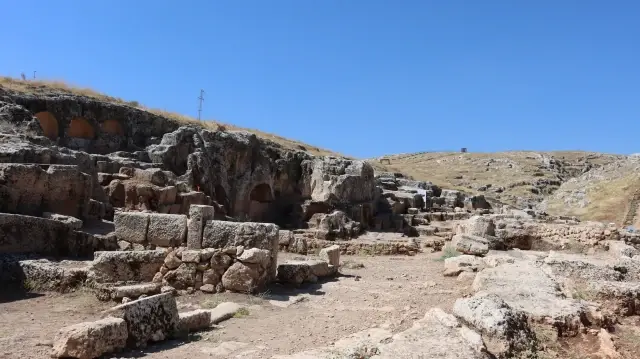Roman-era dwelling uncovered at ancient Perre site in Türkiye

Archaeologists in southeastern Türkiye have discovered a 1,500-year-old residential structure within the Perre Ancient City. The find includes two rooms and a traditional tandoor oven, shedding new light on daily life in the Kommagene civilization.
A significant Roman-era residential structure has been unearthed during ongoing excavations at the Perre Ancient City in Adıyaman, southeastern Türkiye. The 1,500-year-old dwelling, discovered by a team of archaeologists and workers, provides fresh insights into domestic life within one of the Kommagene Kingdom's five major cities. The find underscores the rich archaeological heritage of the Türkiye region and the continuous discoveries emerging from its ancient sites.
Details of the Discovery
The excavation revealed a 154-square-meter living space configured with two adjoining rooms and featuring a well-preserved tandoor, a traditional oven still common in the region today. According to Mehmet Yelken, the Provincial Culture and Tourism Director, the presence of the tandoor is a clear indicator that the space was used for daily life and food preparation. The structure was found near the city's renowned basilica, which is famous for its intricate "Paradise Mosaic."
Artifacts of Daily Life
Yelken highlighted that the team recovered numerous artifacts from the site that paint a picture of ancient domesticity. These finds, including coins, bronze objects, and various household items, help archaeologists piece together the daily activities of the city's inhabitants. The strategic position of Perre on historic trade and military routes is believed to be a key reason for the wealth and diversity of material culture being uncovered there.
Historical Significance of Perre
Perre Ancient City, a major settlement of the Kommagene civilization, has been under archaeological investigation since 2001. Previous excavations have uncovered significant structures such as a Roman fountain, water channels, and block-stone buildings. This latest discovery of a residential area adds a crucial domestic dimension to the understanding of the ancient city, moving beyond monumental public architecture. "We believe the structure represents a significant example of Roman-era domestic life," Yelken stated, expressing optimism for further valuable discoveries in the upcoming excavation seasons.
Reklam yükleniyor...
Reklam yükleniyor...







Comments you share on our site are a valuable resource for other users. Please be respectful of different opinions and other users. Avoid using rude, aggressive, derogatory, or discriminatory language.